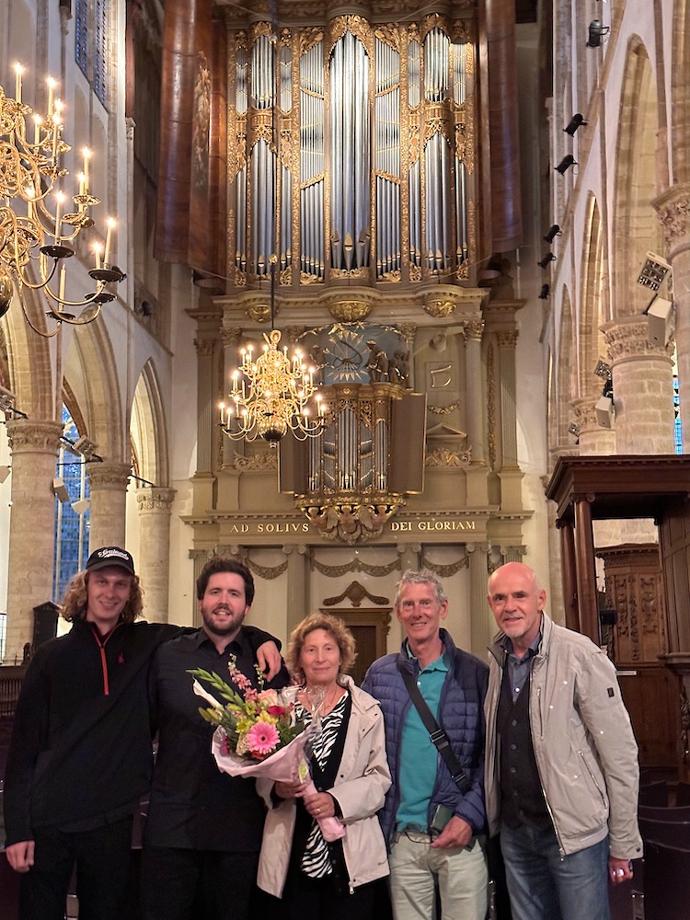Alkmaar, July 30th

Alkmaar and its organs are rare, perhaps unique treasures. Preserved within the city's monumental Grote Sint-Laurenskerk, under the supervision and extreme care of Pieter van Dijk, the instruments, in perfect mechanical condition, intonation, etc., resonate optimally within the architecture of the church.
The evening concert in the Grote Kerk becomes a kind of ‘mystical experience’ in which the organist, playing with the different colours and nuances that the instruments give him, accompanies the audience through a musical journey that has the same sounds perpetuated over the centuries.
The Van Covelens organ, built in1511, in particular, was the first organ played last Wednesday evening: I was told by the audience, sitting right below the instrument, how characterful each individual register was. The main organ (corresponding to the second manual) has deep mechanics and the (in)stability of the air requires the performer to be very attentive and sensitive at all times, both in the attack and the release of the notes (especially during the release of chords, at the end of a piece or at the end of a section). The two eight-foot stops, the Doof 8 and the Holpyp 8 are very warm and harmonically rich registers. In particular, the Holpyp sounds enveloping almost like a caress, sweet and melancholic. The two ripieno allow for two distinct sonorities (one in the low register, the other more in the high register). The first manual, on the other hand, is more agile: flute 4 really sounds like a little bird flying carefree in the woods.
The second part of the evening saw the Van Hagerbeer/Schnitger organ as the real ‘star’. The instrument needs no introduction whatsoever, as it is one of the most fascinating instruments in the world for us organists or fans of this instrument, both in terms of its size and the beauty of its colours. Given the phonics and the size of the keyboards, I believe that all types of instrumental repertoire can be performed. The major problems encountered were:
- the size and 'manoeuvrability' of such a large instrument, both in terms of acoustics and in terms of lunging on the various keyboards (each of which, being connected to a specific organ block, is a representation of a unique sound world in its own right);
- the choice of the stops, where the organist must for obvious reasons seek a balance between beauty of colour and functionality (while respecting the balance of sound planes and the work of the assistant).
Once these 'problems' are overcome, all that remains is to enjoy such a poetic, majestic, grave, generous, spectacular instrument.
My experience in Alkmaar was also enriched by the presence of my parents and some friends from Amsterdam in the audience, the latter very attentive, curious, fervent and enthusiastic, who greeted me with warm applause and a final standing ovation.
So I can only thank Pieter van Dijk for his trust and invitation, as well as Michael Bennet for his support as assistant during the rehearsal and concert, and the entire ECHO organisation.
But now there's no stopping... Next stop: Fribourg (CH)!
Alberto Gaspardo
